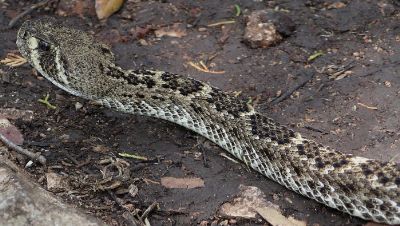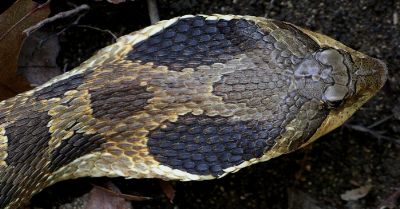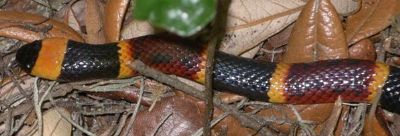
I spend a fair amount of time outside all year long, and only rarely encounter snakes. The sad fact is that many people think the only possible response to seeing a snake is to try to harm it. Hence, the reptiles have become increasingly uncommon around urban areas. Well-trafficked roads are lethal to snakes, as are people with rocks, sticks, or guns. Small snakes fall prey to feral cats and dogs, as well as their more natural enemies such as roadrunners and hawks. Considering all the dangers to the creatures, it is no surprise that populated areas experience a drop in snake populations.
One has to be especially observant to even see a snake. They hide or quickly retreat whenever possible, so it is likely that the casual walker does not notice them even when they are nearby. I tend to deliberately look for wildlife, so I also expect to find the occasional snake along with birds, lizards and bugs.
Since I have started to photograph animals, I've found only a few snakes, including even fewer species. I was very lucky to find garter, hognose, coral, and water snakes back when I used a film camera. More often than not, I was not quick enough to get a picture, but did manage to end up with a few snapshots. Since getting a digital camera, which is small enough to carry with me on most hikes and walks, I now have slightly better luck.
The rattlesnakes of Texas have been harassed and abused in many areas to the point that I've never encountered one while hiking. Most people I know that spend much time outdoors have not seen one in Austin for many years. So it was with quite a start that I finally did see my first rattlesnake here. The amusing thing about this encounter was that I met this rattlesnake in one of the most civilized and well-manicured "natural" areas of Austin: the Ladybird Johnson Wildflower Center. I was heading down one of their short nature trails with the intention of trying to find snakeflies to photograph and almost stepped on a three-foot rattler basking across the path. The little critter was exceptionally accommodating and allowed me to get several photos, although it did get upset when I wanted to continue on down the path. Like most snakes, though, it just rattled a bit in irritation and then slithered out of the way, yielding to the larger creature. The irony of finding a snake instead of a snakefly made the encounter even more entertaining.

Only days later, I happened up another snake taking advantage of the warming temperatures. This time it was a small hognose snake in a dry creek bed. The colors of the animal were so cryptic that I was looking right at it for several seconds before finally discerning the actual outline of a snake. As is common with hognose snakes, this one tried to bluff its ferocity by spreading out its head like a cobra, and then coiling and hissing loudly at me. I didn't bother it to the point that it played dead, but I did consider egging it on to that performance.

Just recently, my mother, Evelyn, contributed to the springtime snake sightings. She had the privilege of snapping photos of a rather lively coral snake in the Silver River State Park near her Florida home the other day. It looks like this year may be a good one for our scaly little legless friends.
